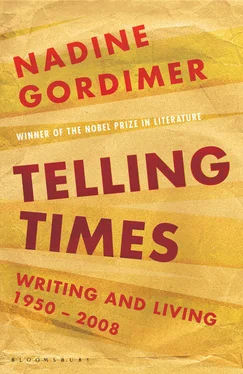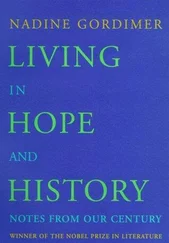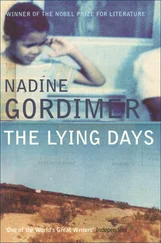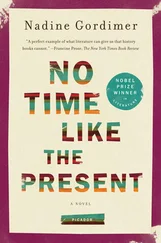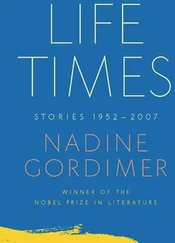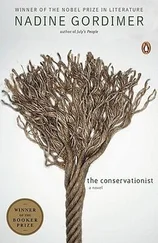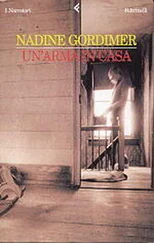How Okonkwo is fatefully involved in this inescapable murder is told mainly through the thoughts of the boy who, believing he is being returned to his home village, is being escorted by the Umuofians to his death. As he is struck by the matchet of one of the men he runs towards Okonkwo, calls out ‘“My father, they have killed me!” Dazed with fear, Okonkwo drew his matchet and cut him down. He was afraid of being thought weak.’
For a time Okonkwo can neither eat nor sleep. He drinks wine ‘from morning till night, and his eyes were red and fierce like the eyes of a rat when it was caught by the tail and dashed against the floor’. For the sacrifice of Ikemefuna, his son Nwoye will never forgive him, with fateful consequences to unfold in his own life and that of his father.
But Okonkwo recovers: ‘he is not a man of thought but of action; it is the season to tap his palm trees for wine, and the family of a suitor for his daughter, sixteen-year-old Akueke, is about to arrive’. The negotiations between the two families over cowrie bride-price and the amount of palm wine the bridegroom’s family is expected to provide are enchantingly comic and slyly character-revealing, without malice — a feature of Achebe’s humour, particularly in his early work, before the ugly and terrible times of civil war and post-independence corruption within which he was writing sharpened humour into teeth-clenched satire.
It is in the chatter at the marriage negotiations that the white man enters for the first time in Umuofia and the novel. There is discussion about different customs among different villages. Someone remarks
‘But what is good in one place is bad in another place …’
‘The world is large,’ said Okonkwo, ‘I have even heard that in
some tribes a man’s children belong to his wife and her family.’
‘That cannot be,’ said Machi. ‘You might as well say that the
woman lies on top of the man when they are making the children.’
‘It is like the story of white men who, they say, are white like
this piece of chalk,’ said Obierika ‘… And these white men, they say, have no toes.’
‘Have you ever seen them?’ asked Machi.
‘Have you?’ asked Obierika.
‘One of them passes here frequently’ [says Machi.] ‘His name is Amadi.’ Those who knew Amadi laughed. He was a leper, and the polite name for leprosy was ‘the white skin’.
The people of Umuofia are great talkers. They become lively companions of the reader, who is overhearing their memories, rivalries, opinions, teasing, original views, all expressed with humour and intimate imagery that come from their way of life, its continuum of history, legend, security of place. The joking reference to the fact that no one has seen a white man is merely a snatch of the exchanges that criss-cross from subject to subject. The white man is butt of a laughable anecdote; he is not there yet, with his Bible and his gun. But Achebe has sounded the single beat of a distant drum, just as subconsciously in our own everyday talk there may occur an unnoticed reference to something that is looming, one day to change our lives.
Okonkwo is just beginning to be able to reconcile himself to — thrust aside — his part in the death of Ikemefuna when his favourite daughter, Ezinma, of whom he thinks so proudly that he has paid her the highest compliment in wishing that she were a boy, falls ill. Iba — malaria — does not respond to the treatment Okonkwo and her mother Ekwefi, one of his wives, give her. With this event, Ekwefi emerges from the wings where so far the village women have remained while men take the centre stage in the story. She is to be the first of a series of women characters, each growing in the author’s intuition of women and recognition of their qualities, their pilgrimage towards the self-realisation that is equality with men in life’s decisions and activities, which was to culminate in the character of Beatrice in his 1987 novel Anthills of the Savannah . Bearing and rearing children is the purpose and dignity allotted to women in Umuofia society. Achebe, the most honest of writers, simply allows us our own judgement of the facts: the fate of local women. Ekwefi has borne ten children and all but Ezinma died in infancy; it is his other wives who have given Okonkwo sons. Ekwefi’s suffering speaks for itself in her natural, dramatic, poetic lament:
Her deepening despair found expression in the names she gave her children. One of them was a pathetic cry, Onwumbiko — ‘Death, I implore you’. But Death took no notice; Onwumbiko died. The next child was a girl, Ozoemena — ‘May it not happen again’. She died, and two others after her. Ekwefi then became defiant and called her next child Onwuma — ‘Death may please himself’. And he did.
So Ezinma at ten years old is the single survivor, best beloved of both parents. It is generally accepted in the village that she is an ogbanje . The concept is rather like that of karma : one who dies in one life returns to live again. But here the rebirth represents a curse.
Some of them [the children] did become tired of their evil rounds of birth and death, or took pity on their mothers and stayed. Ekwefi believed deep inside her that Ezinma had come to stay … a medicine man had dug up Ezinma’s iya-uwa . The iya-uwa was the bond with the world of ogbanje , and the discovery meant that the bond had been broken.
But Ezinma’s latest grave illness suggests that the iya-uwa might not have been the genuine one. In desperation the parents summon the medicine man, Okagbue, to find out from the child where it is believed she herself has buried her real iya-uwa . Ezinma leads Okagbue, her parents and a following crowd on a wild-goose chase (perhaps mischievously!) beyond the village and then back again to an orange tree beside her father’s obi . The medicine man digs a pit there so deep that he can no longer be seen by the tense crowd. Finally, he throws out a rag on his hoe; some women run away in fear. Ceremoniously he unties the rag and the fetish, a smooth, shiny pebble, falls out. ‘“Is this yours?” he asked Ezinma. “Yes,” she replied. All the women shouted with joy because Ekwefi’s trials were at last ended.’ But Achebe, weaving his diviner’s creative texture of life back and forth, suddenly announces that all this happened a year before the point at which his narrative has arrived now, and Ezinma is once more shivering with iba . This time, Okonkwo cures the attack with an inhalation brewed from grasses, roots and barks of medicinal trees. Natural science, rationality, has won over superstition.
The presence of the supernatural, however, in its particular forms is among and embodied in the Umuofians’ daily life just as the supernatural, in their particular forms of belief, is embodied in Christianity, Judaism, Islam, Hinduism, Buddhism and other beliefs.
One of the forms the supernatural takes in Umuofia is the ancestors in the guise of — inhabiting, it is believed — a masquerade of men which among other purposes, administers justice in disputes. The law: not in the judge’s wig and gown, but the fearsome appearance of the egwugwu , ancestral spirits emerging from a sacred hut to sound of drums and flutes. The masquerade faced ‘away from the crowd, who saw only its backs with the many coloured patterns and drawings’ of their masquerade costumes. We can see some of these costumes today in many of the museums of the world, and they are recalled to us from books on African art, for they are recognised as a spectacular and profound art form. Symbolic, like all religious art, they represent, as one of the crowd gathered says, ‘what is beyond our knowledge’.
Читать дальше
